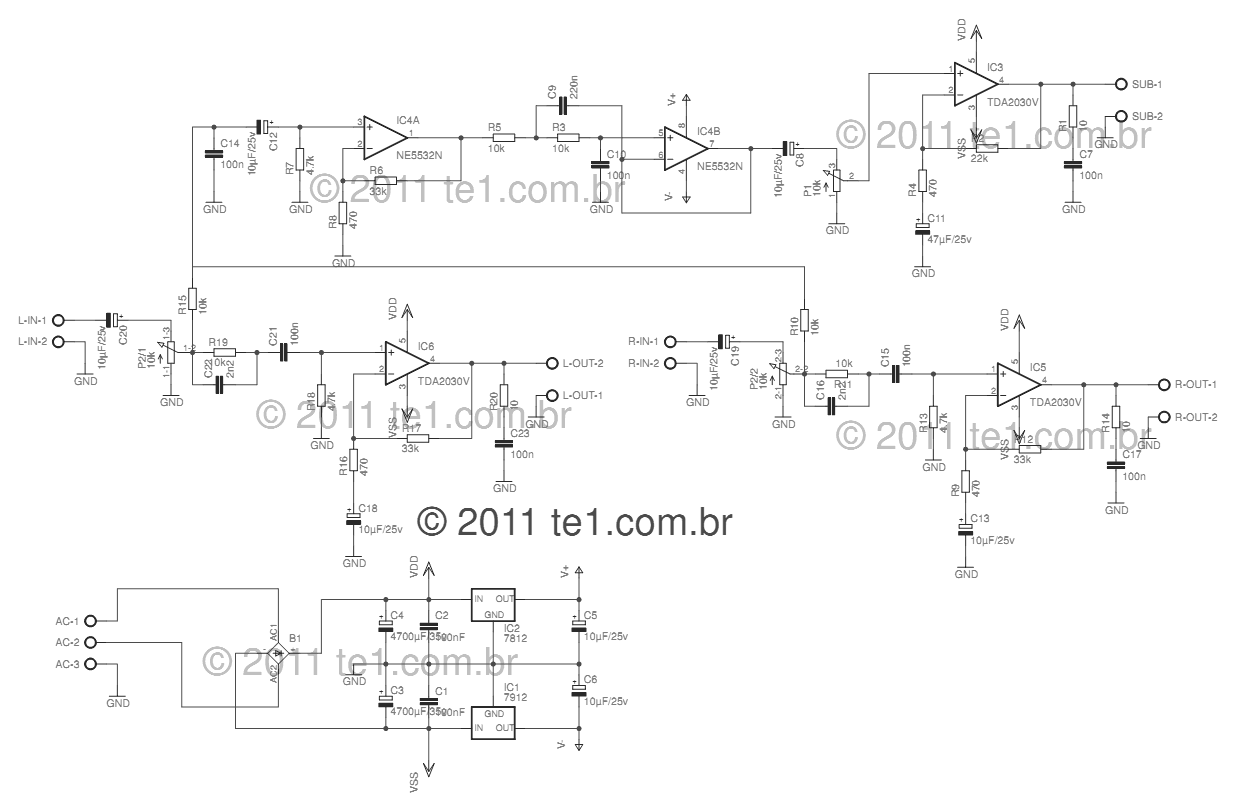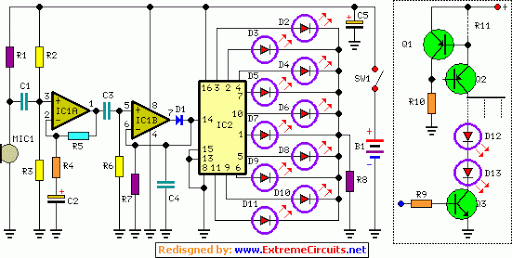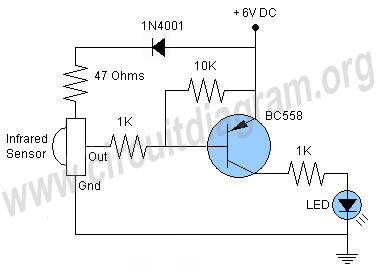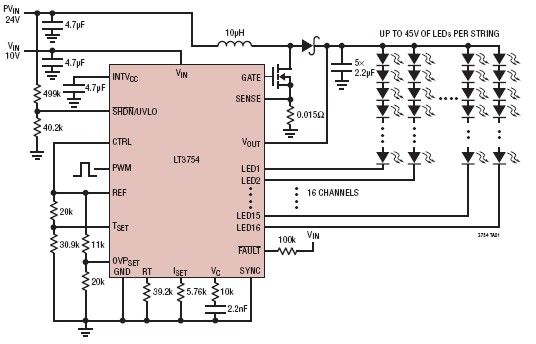
high impedance input JFET/BJT buffer circuit
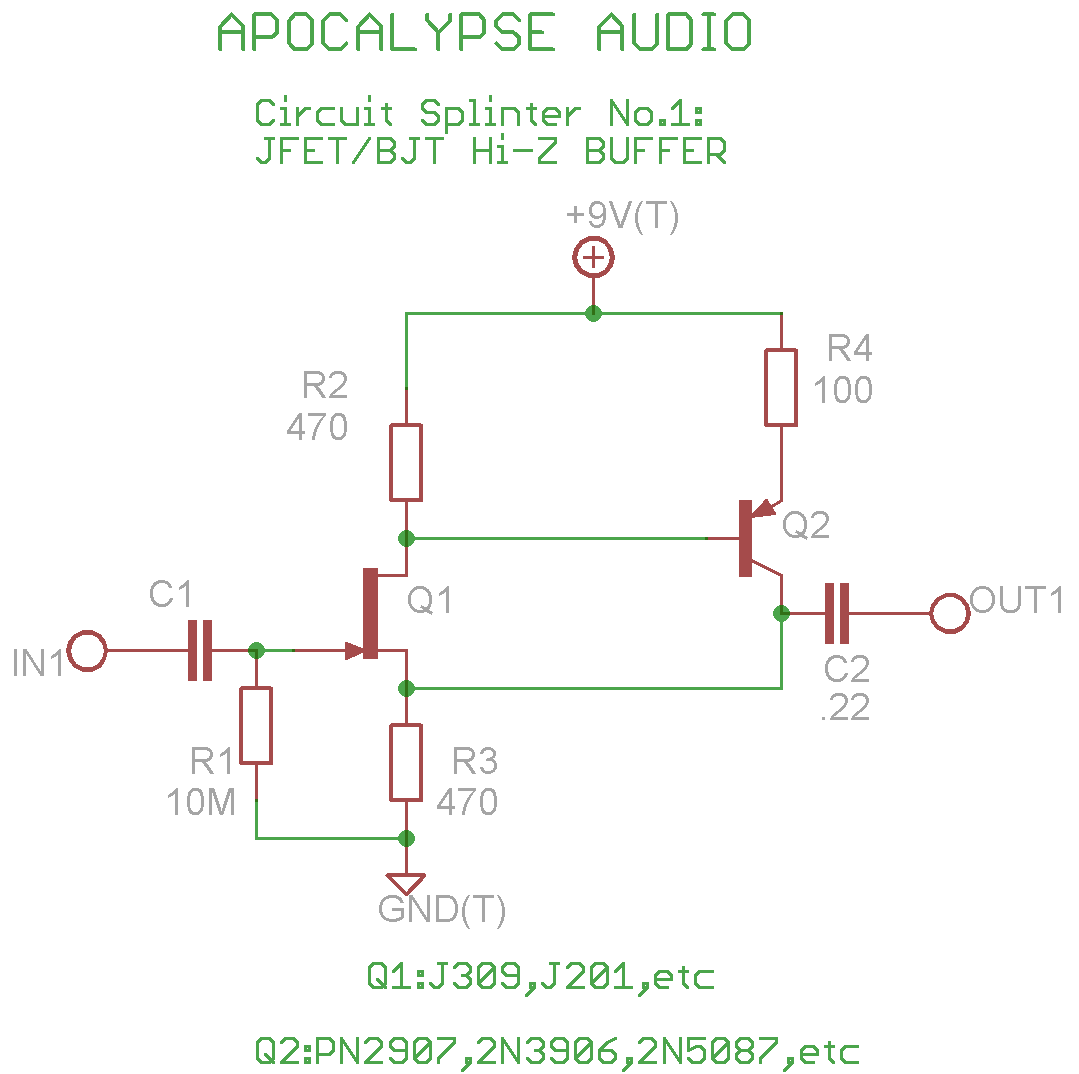
This is a common circuit often found in various resources, yet it appears to be less prevalent in stompbox applications. The circuit utilizes an NPN JFET DC coupled with a PNP BJT. The FET provides a significantly higher input impedance compared to a standard BJT. Resistor R1 can range from 1M to 10M, influencing the low-end response in conjunction with capacitor C1, whose value is left for the user to determine. The BJT is configured in an inverted manner, allowing the use of a PNP transistor within a negative ground circuit, likely due to its superior noise specifications. While the output current of this configuration has not been measured against a single FET buffer, it is a potential future experiment. The primary reason for presenting this buffer circuit is its capability to be easily modified into an amplifier stage, which can serve as a booster or overdrive. Further details will be provided in the next installment of CIRCUIT SPLINTERS. A bonus question is posed regarding the placement of the resistor to convert this buffer into an amplifier.
The circuit in question is a hybrid design that effectively combines the characteristics of both JFETs and BJTs to create a versatile audio buffer. The use of an NPN JFET allows for high input impedance, which is critical in audio applications to prevent loading of the previous stage and preserve signal integrity. This high impedance is particularly beneficial for interfacing with high-impedance sources such as electric guitar pickups.
The PNP BJT is configured in an inverted manner, which is essential for compatibility with negative ground systems, commonly found in modern electronic devices. This configuration not only minimizes noise but also enhances the overall performance of the circuit by leveraging the low noise characteristics of the PNP transistor.
The resistor R1 plays a pivotal role in determining the input characteristics of the circuit. By varying its value between 1M and 10M, one can tailor the low-frequency response of the circuit, making it adaptable to different audio signals. The capacitor C1, which is left to the user's discretion, will further influence the frequency response and can be selected based on the desired cutoff frequency for the application.
To transform this buffer into an amplifier, the addition of a feedback resistor in the appropriate location is crucial. This feedback resistor can be connected from the collector of the PNP transistor to its base, creating a negative feedback loop that increases gain while maintaining stability. The specific value of this resistor will determine the gain of the amplifier stage, allowing for customization based on user requirements.
Overall, this circuit not only serves as a buffer but also offers the potential for expansion into more complex audio processing applications, such as a booster or overdrive, making it a valuable addition to any audio engineer's toolkit. Further exploration of this circuit in subsequent discussions will likely yield additional insights and modifications for enhanced performance.this is a rather common cookbook circuit that you can find in books and on the net, yet personally i have yet to see it in stompbox circles, so i thought i would post it. it uses an npn JFET DC coupled with a pnp BJT . the FET allows a a much higher input impedance than a BJT normally would. R1 could realistically be anything from 1M to 10M, this will only really affect the low end coupled with C1(which i have left open for you to decide the value).
the BJT is "inverted" so that a pnp transistor can be used with a negative ground circuit, for what i presume is for it's lower noise specs. i haven't measured the output current of this configuration versus a single FET buffer, but that could be something i'll do in the future and report back.
the real reason i am posting this buffer is because it can easily be turned into an amplifier stage, which can subsequently be used for a sweet booster/overdrive. all that and more in the next installment of CIRCUIT SPLINTERS! bonus question: anyone want to tell me where to place the resistor in order to turn this buffer into an amplifier?
🔗 External reference
The circuit in question is a hybrid design that effectively combines the characteristics of both JFETs and BJTs to create a versatile audio buffer. The use of an NPN JFET allows for high input impedance, which is critical in audio applications to prevent loading of the previous stage and preserve signal integrity. This high impedance is particularly beneficial for interfacing with high-impedance sources such as electric guitar pickups.
The PNP BJT is configured in an inverted manner, which is essential for compatibility with negative ground systems, commonly found in modern electronic devices. This configuration not only minimizes noise but also enhances the overall performance of the circuit by leveraging the low noise characteristics of the PNP transistor.
The resistor R1 plays a pivotal role in determining the input characteristics of the circuit. By varying its value between 1M and 10M, one can tailor the low-frequency response of the circuit, making it adaptable to different audio signals. The capacitor C1, which is left to the user's discretion, will further influence the frequency response and can be selected based on the desired cutoff frequency for the application.
To transform this buffer into an amplifier, the addition of a feedback resistor in the appropriate location is crucial. This feedback resistor can be connected from the collector of the PNP transistor to its base, creating a negative feedback loop that increases gain while maintaining stability. The specific value of this resistor will determine the gain of the amplifier stage, allowing for customization based on user requirements.
Overall, this circuit not only serves as a buffer but also offers the potential for expansion into more complex audio processing applications, such as a booster or overdrive, making it a valuable addition to any audio engineer's toolkit. Further exploration of this circuit in subsequent discussions will likely yield additional insights and modifications for enhanced performance.this is a rather common cookbook circuit that you can find in books and on the net, yet personally i have yet to see it in stompbox circles, so i thought i would post it. it uses an npn JFET DC coupled with a pnp BJT . the FET allows a a much higher input impedance than a BJT normally would. R1 could realistically be anything from 1M to 10M, this will only really affect the low end coupled with C1(which i have left open for you to decide the value).
the BJT is "inverted" so that a pnp transistor can be used with a negative ground circuit, for what i presume is for it's lower noise specs. i haven't measured the output current of this configuration versus a single FET buffer, but that could be something i'll do in the future and report back.
the real reason i am posting this buffer is because it can easily be turned into an amplifier stage, which can subsequently be used for a sweet booster/overdrive. all that and more in the next installment of CIRCUIT SPLINTERS! bonus question: anyone want to tell me where to place the resistor in order to turn this buffer into an amplifier?
🔗 External reference

